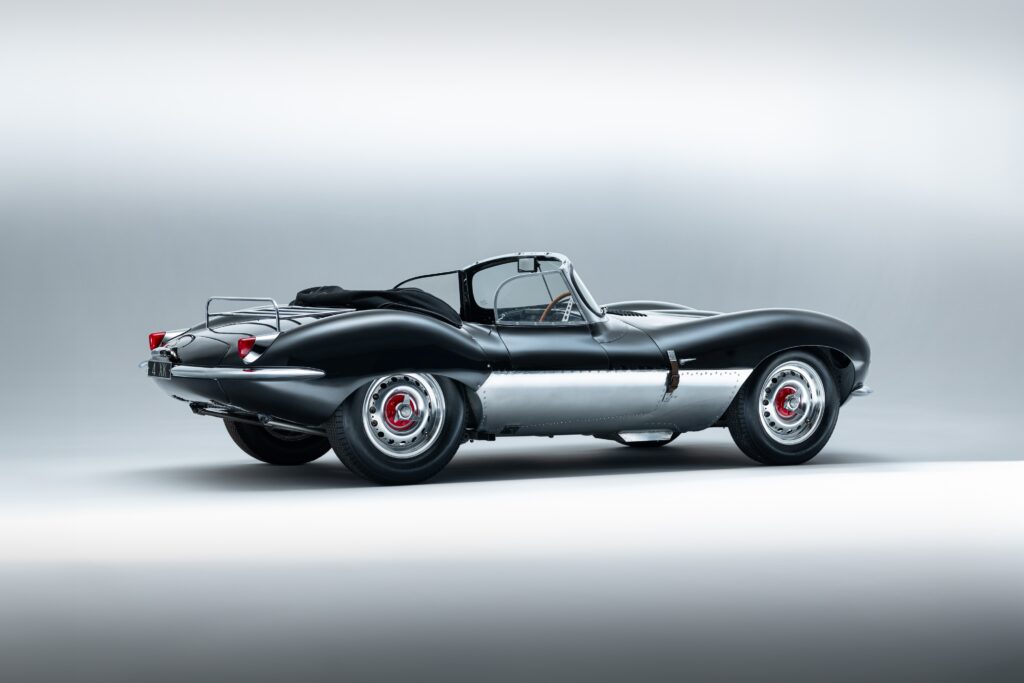The Jaguar XKSS is a car known for its looks, performance and technical innovations. But it owes its legendary status mainly to actor Steve McQueen - and the most dramatic race ever...
Text: Gerben Bijpost Photography: Neil Fraser ©2024 Courtesy of RM Sotheby's
Just as the Bentley brand forged its reputation at the 24 Hours of Le Mans in the 1920s, Jaguar did so a generation later. The Coventry-based marque recorded five victories in seven years, between 1951 and 1957. Those in 1951 and 1953 were achieved with the XK120-C (or C-Type). But it was the hat-trick of victories between 1955 and 1957, in the name of its revolutionary successor, the D-Type, that ensured Jaguar became a true legend at Le Mans.
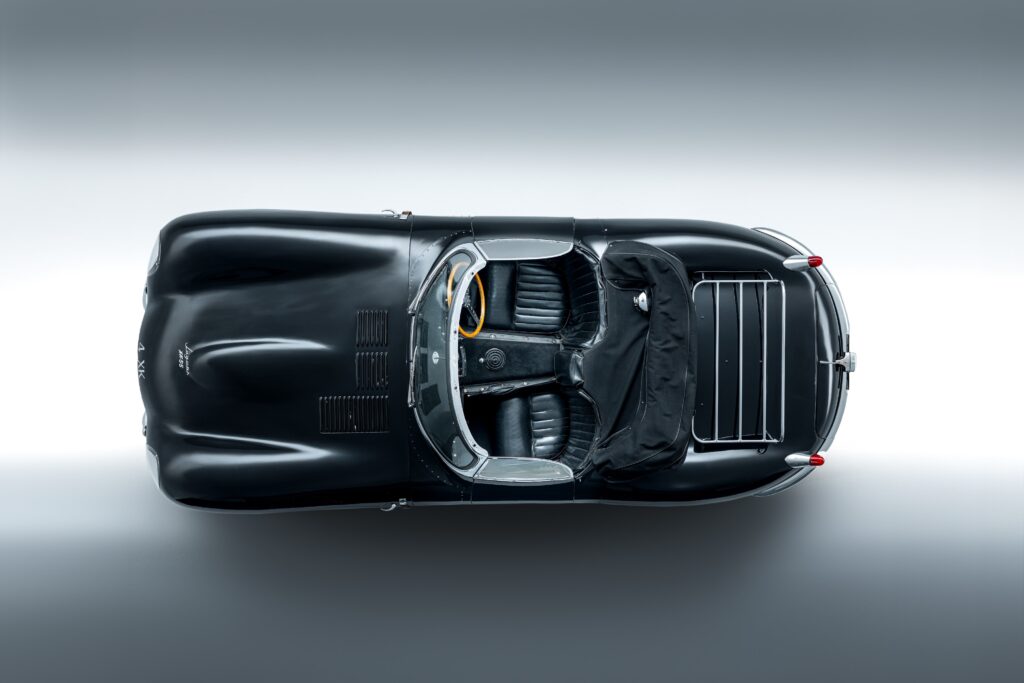 From racetrack to public road
From racetrack to public road
The brilliant engineer Malcolm Sayer played a key role in the design of both cars, but took a major technical leap forward with the D-Type. While the C-type used a traditional tubular chassis clad in aluminium bodywork, Jaguar used monocoque construction for the D-type, a technique that came straight from the aerospace world and provided a stiffer and lighter chassis. It was an innovation that would later be adopted by many sports car manufacturers.
Designed with a focus on aerodynamics and speed, the D-type won the 24 Hours of Le Mans three times (1955, 1956, and 1957) and is often associated with famous drivers such as Mike Hawthorn and Stirling Moss. Hawthorn was the first British driver to become world champion in Formula 1, but is better known for the deadliest race ever, the 24 Hours of Le Mans in 1955, in which 84 people lost their lives and 120 others were injured. Hawthorn raced that day in a Jaguar D-Type.
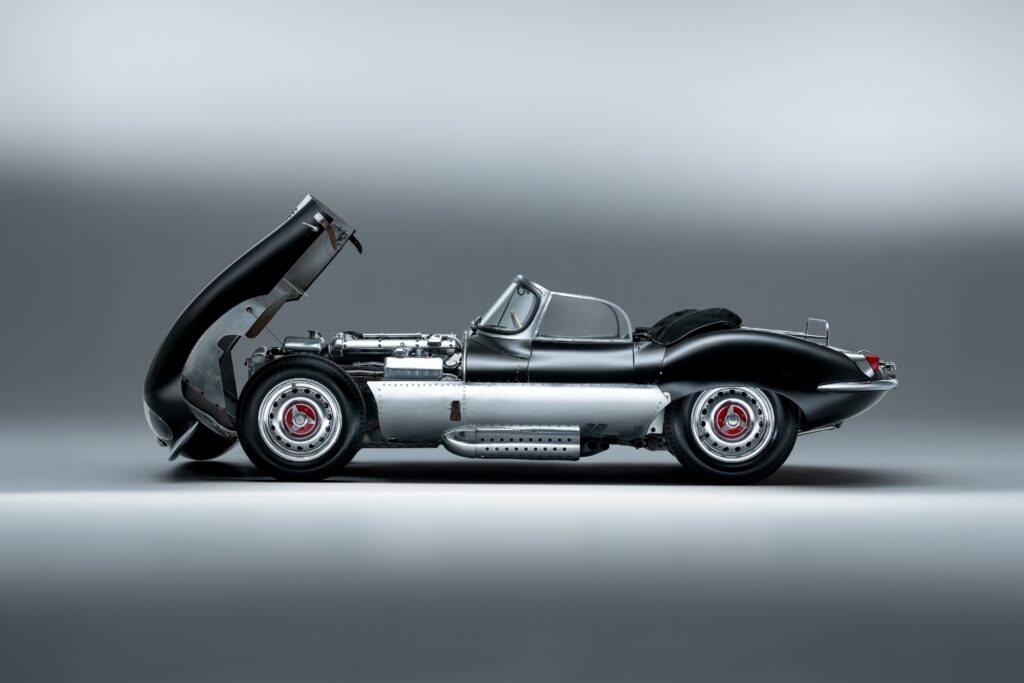 The accident happened some two hours after the start of the race, after which the remaining 22 hours were 'just' completed. Hawthorn and co-driver Ivor Bueb won the race at a record speed of over 170 km/h on average. After the race, Hawthorn was distracted and somewhat confused, but in a rash moment he smiled and took a sip from the bottle of victor's champagne that had been pushed into his hands. This was captured by a photographer and promptly appeared in the French magazine L'Auto Journal with the cynical caption: 'À votre santé, Monsieur Hawthorn.' (To your health, Mr Hawthorn.) Four years later, Mike Hawthorn himself would be killed when he skidded on a wet road near his home town of Farnham with his Jaguar Mk1. He was 29 years old.
The accident happened some two hours after the start of the race, after which the remaining 22 hours were 'just' completed. Hawthorn and co-driver Ivor Bueb won the race at a record speed of over 170 km/h on average. After the race, Hawthorn was distracted and somewhat confused, but in a rash moment he smiled and took a sip from the bottle of victor's champagne that had been pushed into his hands. This was captured by a photographer and promptly appeared in the French magazine L'Auto Journal with the cynical caption: 'À votre santé, Monsieur Hawthorn.' (To your health, Mr Hawthorn.) Four years later, Mike Hawthorn himself would be killed when he skidded on a wet road near his home town of Farnham with his Jaguar Mk1. He was 29 years old.
When Jaguar withdrew from racing in 1956, there were still a number of unfinished D-Type chassis in the factory. A shame to take to the scrap yard, it was rightly felt. So to recoup the investment, Jaguar decided to convert them into street cars, which would bear the XKSS name. The plan was to make twenty-five examples, mainly intended for the North American market.
But on 12 February 1957 -again- disaster struck: a major fire broke out at the Browns Lane factory in Coventry. As many as nine XKSS cars were lost, meaning that ultimately only 16 would ever hit the road. A minor tragedy, of course, but one that would only add to the exclusivity of the XKSS.
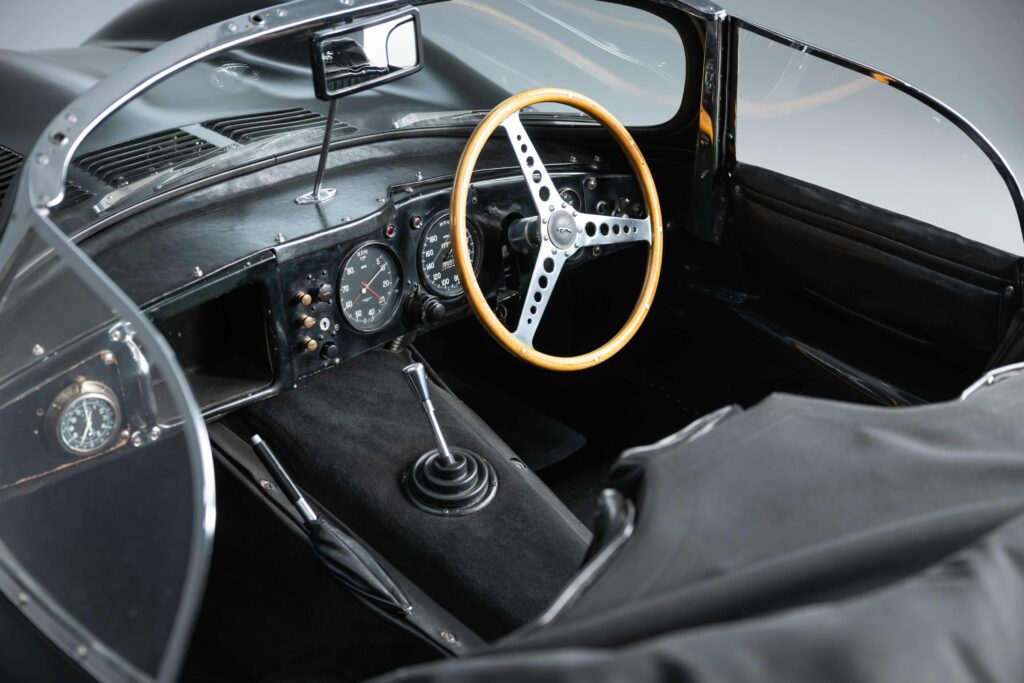 Jaguar XKSS: the world's first supercar
Jaguar XKSS: the world's first supercar
So the Jaguar XKSS was nothing more or less than a modified version of the illustrious and blisteringly fast D-Type, modified to make it legal to drive on the road. So Jaguar added a passenger seat, full windscreen, side windows, bumpers and a luggage rack to make the car suitable for public roads. The rear spoiler, once so essential for stability on the track, was removed. And the interior was fitted with leather upholstery to enhance driving comfort.
Despite these modifications, the core of the XKSS remained pure and uncompromising. Under the bonnet was the same 3.4-litre six-in-line engine as the D-Type, which delivered impressive performance and enabled the car to reach speeds of up to 230 mph. This was unprecedented for a street car at the time and ensured that the XKSS is still considered one of the world's first true 'supercars'.
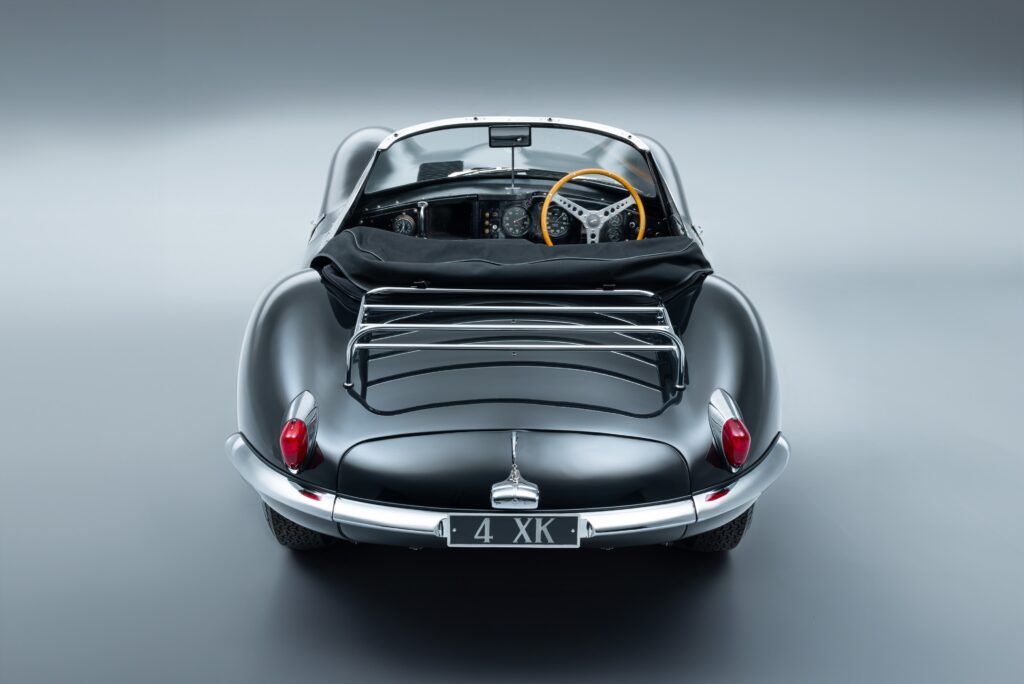 Steve McQueen
Steve McQueen
The King of Cool, or actor Steve McQueen, was known for his love of fast cars and motorbikes and immediately fell in love with the XKSS. In 1958, he bought one of the remaining 16 examples and immediately had it repainted in his favourite colour, British Racing Green. He also gave his new toy a pet name: 'Green Rat.' The XKSS suited McQueen's lifestyle and the image he cherished perfectly; a car that exuded elegance and rugged speed at the same time. McQueen therefore used the XKSS not only as a stylish mode of transport, but also to race against friends in informal street races.
In 1969, however, he sold the car, afraid than the speed of this street racer would eventually cost him his licence permanently. But over the years he began to miss the XKSS more and more, so much so that in 1977 he contacted the owner and bought the same car for a second time.
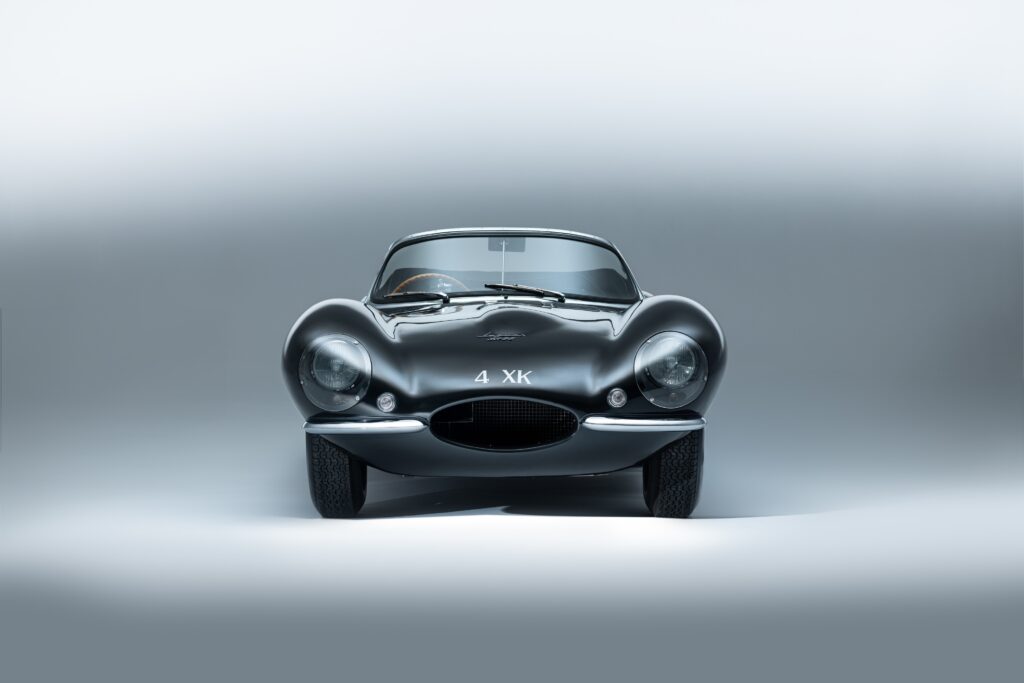 Cult status
Cult status
Today, the Jaguar XKSS is one of the most sought-after and valuable classics in the world. The combination of its racing successes, its very limited production run and the iconic image the car acquired thanks to McQueen means that copies of the XKSS fetch millions of dollars at auctions. An original XKSS was even auctioned in 2017 for a record amount of almost $20 million!
That exclusivity was further underlined when Jaguar announced in 2016 that it would build nine brand new XKSS models, in tribute to the nine lost in the 1957 fire. These new cars were manufactured entirely by hand (about 10,000 man-hours of work per car) to the exact specifications of the original. While equipped with modern technologies to ensure safety and durability, they were also completely retaining the authentic design.
It makes the Jaguar XKSS more than just another car. It is a legend that transcends the boundaries of time and space, a tribute to Jaguar's achievements in the 1950s, an icon of British engineering and a symbol of the cultural impact the car industry can have.
The car you can admire on these pages is in excellent condition and you can buy it via RM Sotheby's, provided your bank account is filled enough. Assume -at least- around 12 million euros to stand any chance. But should you succeed, you'll be able to race it without a care in the world, as the car is accompanied by a useful package of spare parts, including headlights, a rear axle, Marston Excelsior radiator, piston rods, wheels, wheel bearings and more. Have fun!



